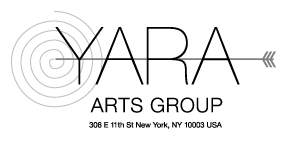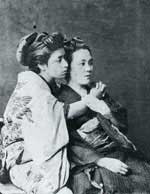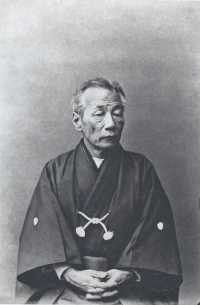
| BRAMA | Theatre | Events | Workshops | Translations | Series | Newsletter | Calendar | Store | Yara Home |

SUNDOWN
NEW YORK, February 12 -- Sundown, the latest work by Yara Arts Group, is a theatrical reflection on the life and work of the father of Japanese photography, Hikoma Ueno (1838-1904), written and directed by Watoku Ueno. The piece is an East-West story, chronicling how Japanese learned photography from European travelers and scientists, and takes the audience on a trip from the beginnings of photography to the paths exploring endless possibilities and unwritten stories hidden behind a "frozen" image. The piece will feature original Japanese costumes, old photographs and folk songs superimposed with breathtaking images, dance and puppets.
The play will be interdisciplinary, using elements of theater, music and dance. It portrays Japan in one of its most turbulent times of transition, from the Edo period to the Meiji period, when Western ideas clashed, filtered or were integrated into the Japanese tradition. It portrays Hikoma Ueno as a chemist possessed by photography, who refined a formula for developing a picture (wet plate) as part of his search for a perfect artistic expression. The playscript will be developed by Watoku Ueno and the Yara company, using historical Japanese sources on Hikoma Ueno and fragments from Soseki Natsume’s "Ten Night’s Dreams." There will be a cast of seven (TBA). The show is to be performed in English and Japanese, in the signature Yara style that permits all audiences to understand.
Hikoma Ueno, the son of Ueno Shunnojo, was born in Gin-ya machi, Nagasaki. His father was a scholar of Western studies and was famous for producing potassium nitrate and for making calico. The Ueno family had painted portraits for generations. While Hikoma was learning chemistry from the Dutch navy surgeon Julius L.C. Pompe van Meerdervoort, he became interested in photography. He developed his own process for wet plate photography and opened Japan's first photography studio in 1862.
His work was artistically outstanding, but commercial success was slow to build for him. Initially, his subjects were foreigners, since there was considerable suspicion and resistance on the part of Japanese toward being photographed. This changed during the war of Meiji Restoration, when rebel leaders flocked to his studio to have their images preserved, in anticipation that they would be killed in battle. He is most renowned for a studio portrait of Sakamoto Ryoma, one of the leaders of the Meiji Restoration. In the 7th year of the Meiji period (1874), he took a picture of Venus, the first photograph of a planet taken in Japan. In the 10th year of Meiji (1877), he photographed the Seinan War, the first battle photographs in Japan. He is also known for his photos of temples and other traditional sites, and for his landscapes, which included interesting views of Nagasaki.
Director Watoku Ueno will also design set and lights. A founding member of Yara Arts Group, he has co-directed and designed most of Yara’s 15 productions and is an NEA/TCG award-winning designer. He is not descended from the famous photographer. He was drawn to this subject through his own experience with theatrical photography, his interest in East-meets-West themes, and his interest in the personality of an artist who is also a technician. He is also fascinated by this period of Japanese history, when culture and revolution flowered together.
Founded in 1990, Yara Arts Group, a resident company of La MaMa, creates original pieces that explore timely issues rooted in the East through the diverse cultural perspectives of the group's members. Yara artists are of Asian, African, Eastern and Western European ethnic origin. They bring together poetry, song, historical materials and scientific texts, primarily from the East, to form what one critic described as "extended meditation on an idea." The company has created seven pieces based on materials from Eastern Europe including: "A Light from the East," "Blind Sight," "Yara's Forest Song," and "Swan." The New York Times (D.J.R. Bruckner) called one of these pieces, “Waterfall/Reflections” developed with folk singer Nina Matvienko, "a theatrical enchantment given cohesion by choreographed movement and by music on a prodigal scale." Since 1996 Yara has also created seven theater pieces with Buryat artists from Siberia. The Village Voice (Eva Yaa Asantewaa) called "Circle" as a World Music-Theater work with artists from the Buryat Republic at La MaMa in the spring of 2000. "a stunningly beautiful work (that) rushes at your senses, makes your heart pound, and shakes your feelings loose."
Sundown is being made possible, in part, by public funds from the New York State Council on the Arts.
Critics are invited on or after 4/29.


For more pictures and
excerpts from reviews on Yara's Sundown